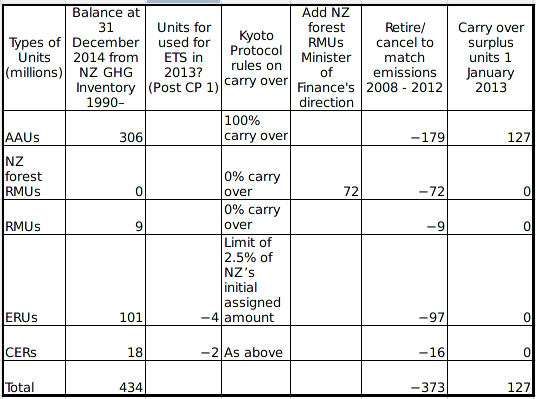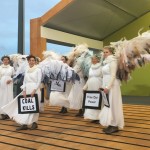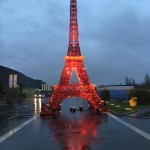 Simon Johnson aka Mr February looks at the Government’s latest token consultation about tinkering with the train-wreck New Zealand Emissions Trading Scheme. We are still driving fast towards a cliff but the argument has moved from which gear to air-con versus heater. The Government has kindly given us the opportunity to make a submission about how hot or cold we should be as we go over the emissions cliff.
Simon Johnson aka Mr February looks at the Government’s latest token consultation about tinkering with the train-wreck New Zealand Emissions Trading Scheme. We are still driving fast towards a cliff but the argument has moved from which gear to air-con versus heater. The Government has kindly given us the opportunity to make a submission about how hot or cold we should be as we go over the emissions cliff.
Back in September 2012, when Tim Groser and the National Government were last watering down the New Zealand Emissions Trading Scheme (NZETS), I wrote a post that used an excellent metaphor for amending the NZETS, tinkering with the gears while driving a car fast towards a cliff.
All credit should go to former Greens co-leader Jeanette Fitzsimons who had absolutely nailed her answer to questions from TVNZ about the relevance of amendments to the NZETS.
Now we roll forward and there is another review of the woeful NZETS.

 New Zealand’s new Minister for Climate Change, Paula Bennett, has just
New Zealand’s new Minister for Climate Change, Paula Bennett, has just 
 What can I add to the millions of words in dozens of languages that have already been written by the thousands of journalists and commentators around the Paris Agreement? We now have a globally binding agreement that really looks like it could curtail the use of a fuel that has been central to our way of life for more than 150 years.
What can I add to the millions of words in dozens of languages that have already been written by the thousands of journalists and commentators around the Paris Agreement? We now have a globally binding agreement that really looks like it could curtail the use of a fuel that has been central to our way of life for more than 150 years. One of the most beautiful things I saw on my facebook feed last week were some angels at Republique, the scene of the attacks last month. Those same angels appeared at the entrance to the UN zone at the climate talks out at Le Bourget the other day as we walked into the centre. Today it was the Greenpeace polar bear, Aurora, roaring at everyone. But whatever is set up to amuse us on the way in, there’s no getting around it: we’re heading to the pointy end of the Paris agreement, and it’s no longer really about pictures. It’s all about words. The text.
One of the most beautiful things I saw on my facebook feed last week were some angels at Republique, the scene of the attacks last month. Those same angels appeared at the entrance to the UN zone at the climate talks out at Le Bourget the other day as we walked into the centre. Today it was the Greenpeace polar bear, Aurora, roaring at everyone. But whatever is set up to amuse us on the way in, there’s no getting around it: we’re heading to the pointy end of the Paris agreement, and it’s no longer really about pictures. It’s all about words. The text. I’ve been in Paris for over a week now, and the speed at which everything goes past, including time, is frightening. I think the 40,000 expected have now all arrived. I’m getting worried the only Eiffel Tower I’ll see is the one made of red folding chairs at the end of the “Champs Elysee” at the meeting.
I’ve been in Paris for over a week now, and the speed at which everything goes past, including time, is frightening. I think the 40,000 expected have now all arrived. I’m getting worried the only Eiffel Tower I’ll see is the one made of red folding chairs at the end of the “Champs Elysee” at the meeting.